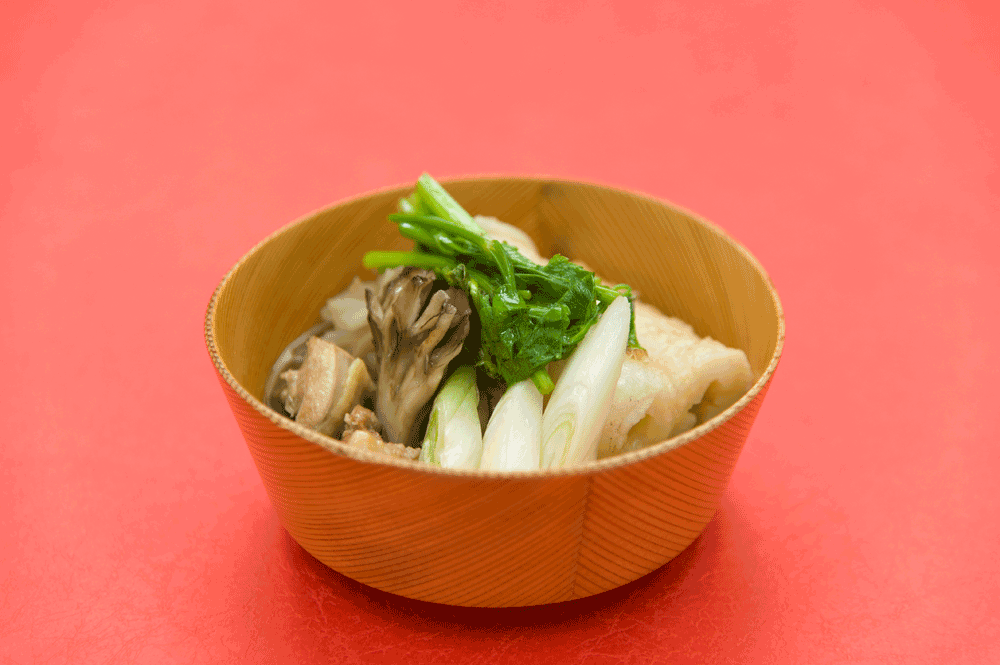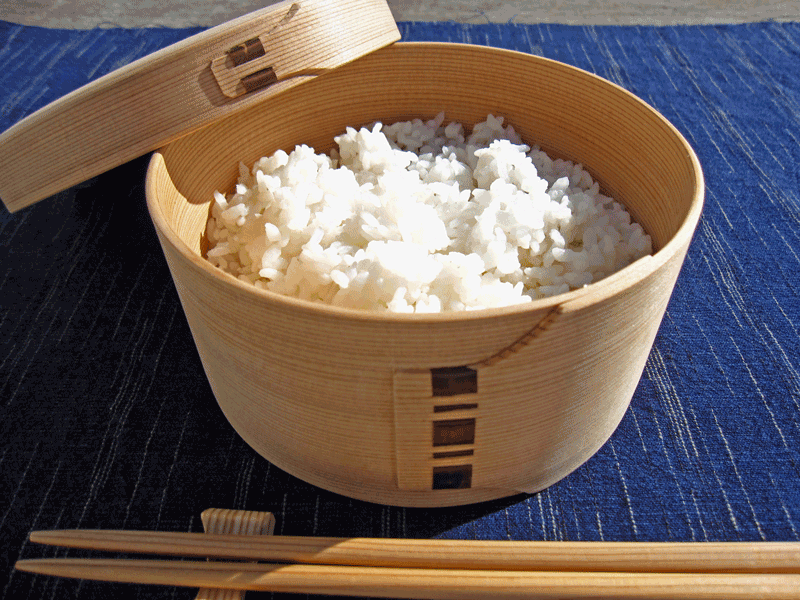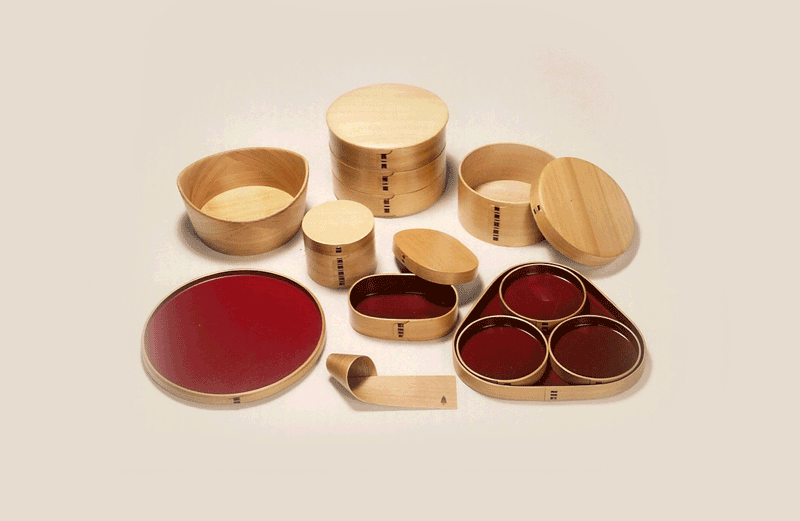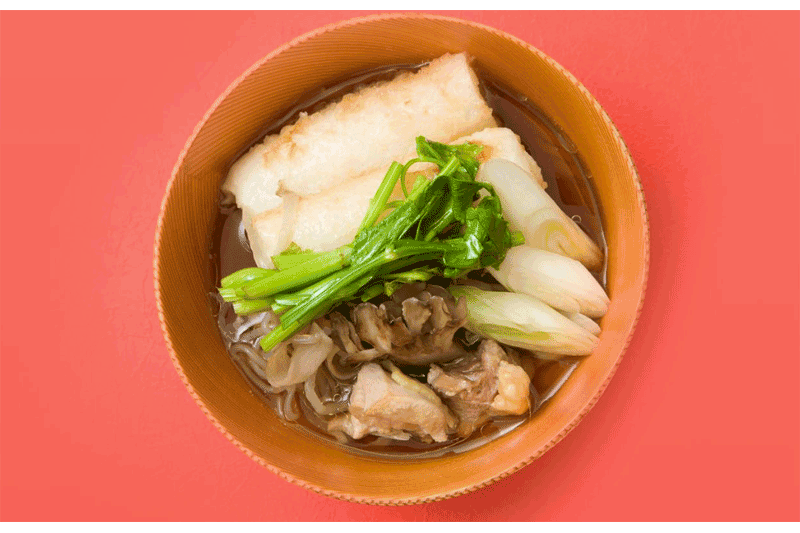The city of Odate is not just known as the birthplace of Japan’s most celebrated dog. It is also a location where artisans have been transforming the area’s local cedar into fine pieces of craftwork for centuries, and where one of the prefecture’s regional culinary specialities has been elevated to the highest art.
Fine-Grained Quality
Walk through forests around Odate and the raw material for the craft of magewappa (traditional wood turning) is all around. In this cold climate, the aromatic cedar grows slowly, developing dense rings that make for a rich, lustrous grain.
Odate developed a reputation for this craft as a result of hard times and of the clever thinking of a local lord. Following the Battle of Sekigahara in 1600, the people of Odate were suffering from extreme poverty due to the effects of the great war. As the story goes, the feudal lord at the time knew that he needed to come up with a way to help his people. Seeing that the workers who cut down trees and shaped the wood made their bento boxes out of rough-hewn pieces of cedar, an idea came to mind.
He requested that his samurai take up the woodworking craft, but approach it with the skill that would be expected of a highly trained warrior. After gaining popularity around Akita, the crafts achieved a great reputation in neighboring provinces as well. Although the lord, whose name remains lost to history, asked his samurai to take up magewappa as a side job, the craft eventually became the primary livelihood of many of these samurai, and the skills required to create magewappa pieces were passed down from generation to generation.
In contrast to wood turning that is done with a lathe, magewappa pieces are made by soaking thin pieces of wood in hot water, and then bending them into oval or cylindrical shapes. To complement the light color of the cedar, dark pieces of cherry wood are used as accents, and the surfaces of some pieces are treated with a luxuriously dark red lacquer. Although the craft was first restricted to bento boxes and o-hitsu (small tubs for serving rice), it is now used for everything from serving trays to elegant drinking vessels.
Although the development of plastics did have an effect on the artisans who specialize in magewappa, this woodworking tradition remains a favorite of those who recognize the unique qualities of Akita cedar – from its distinctive aroma to its characteristic straight grain – and the centuries of tradition that go into making these pieces. In 1980, magewappa was recognized as an Official Craftwork of Japan, and visitors to Odate are welcome to take part in magewappa workshops, as well as taking back a piece of this portable tradition with them, wherever their journeys take them.
Soul Food from Akita
One of the best known dishes in Akita is kiritampo nabe. In principle, it’s a simple meal, but as with all fine food, the ingredients are of greatest importance. The main ingredient in kiritampo nabe are the cylindrical dumplings made from sticky rice called kiritampo. Given that Akita Prefecture is celebrated for its rice, it’s no wonder that this fundamental part of the dish is as good as it is, and Odate is said to be where this particular dish got its start. Along with this basic ingredient, fresh ingredients from the region are added – burdock, onion, and other regional vegetables. Another star of the dish is the meat of the famed Hinai-jidori chickens, free-range birds that are raised on the fresh grasses and produce of the central highlands of Akita.
Like the tradition of the magewappa, the history of kiritampo goes back many centuries. Some believe that it was the food that people – particularly hunting parties – would cook while on the move. The ingredients would be simmered in a cast iron pot over an open fire, making for hearty food that would keep people satisfied for the long day’s hunt that would follow the next day. Since those times, kiritampo nabe has become the epitome of home cooking in Akita, with each family preparing it in a slightly different way. Now, you can also find many restaurants around Akita, particularly in Odate, that serve this traditional meal, with each particular restaurant preparing the meal with a unique touch – based on tradition, but flavored with individuality.
Sponsored Post











